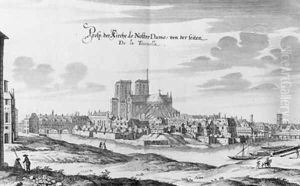Merian Paintings
Maria Sibylla Merian was an influential figure in the fields of entomology and botanical illustration, born on April 2, 1647, in Frankfurt, Germany. Coming from a family with a background in publishing and engraving, Merian was exposed to the world of art and illustration from a young age. Her stepfather, Jacob Marrel, a still-life painter, played a significant role in her early education, teaching her to draw and paint. Merian's interest, however, extended beyond traditional subjects; she was fascinated by the metamorphosis of butterflies, a theme that would dominate her work throughout her life.
Merian's contributions to art and science are particularly remarkable considering the era in which she lived—a time when it was uncommon for women to pursue careers, let alone in the sciences. In 1679, she published her first book of natural illustrations, 'Neues Blumenbuch' (New Book of Flowers). This work was followed by 'Der Raupen wunderbare Verwandlung und sonderbare Blumennahrung' (The Caterpillar's Marvelous Transformation and Strange Floral Food) in 1679-1683, where she documented the life cycles of butterflies, breaking new ground in entomology. Her detailed observations and descriptions challenged the contemporary beliefs about insect life cycles, contributing significantly to the field.
Merian's most ambitious journey took place in 1699 when, at the age of 52, she traveled to the Dutch colony of Surinam in South America, accompanied by her daughter Dorothea. There, she studied and documented the exotic flora and fauna, focusing on the life cycles of insects. In 1705, she published 'Metamorphosis Insectorum Surinamensium' (Metamorphosis of the Insects of Surinam), a groundbreaking work that combined scientific accuracy with artistic beauty. The book was highly praised for its detailed illustrations and descriptions, offering European audiences their first glimpse into the biodiversity of the New World.
Maria Sibylla Merian passed away on January 13, 1717, in Amsterdam. Her legacy lives on through her contributions to the fields of botany and entomology, as well as through her pioneering role as a female scientist and artist. Merian's work not only advanced scientific understanding but also challenged the barriers faced by women in the sciences and arts. She is remembered as one of the most important naturalists and scientific illustrators of her time, whose meticulous observations and artistic talent continue to inspire generations.
